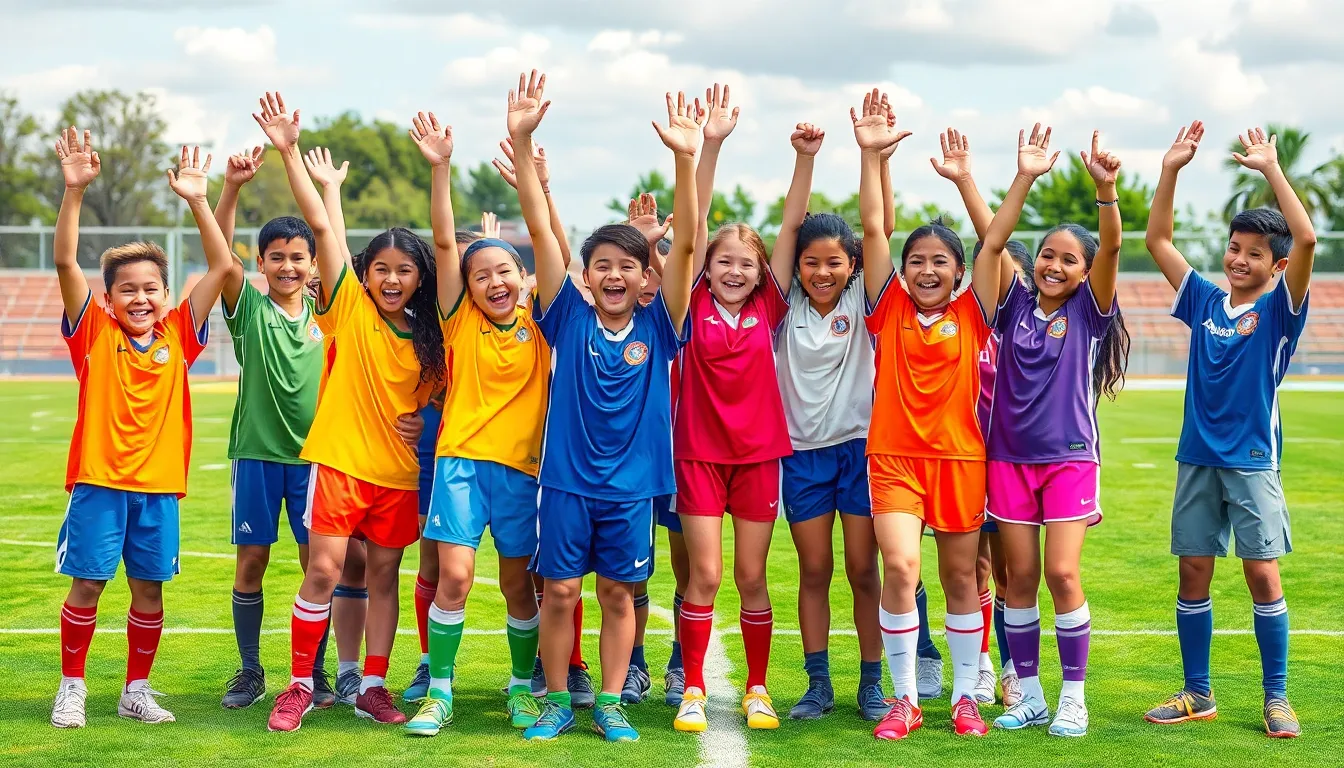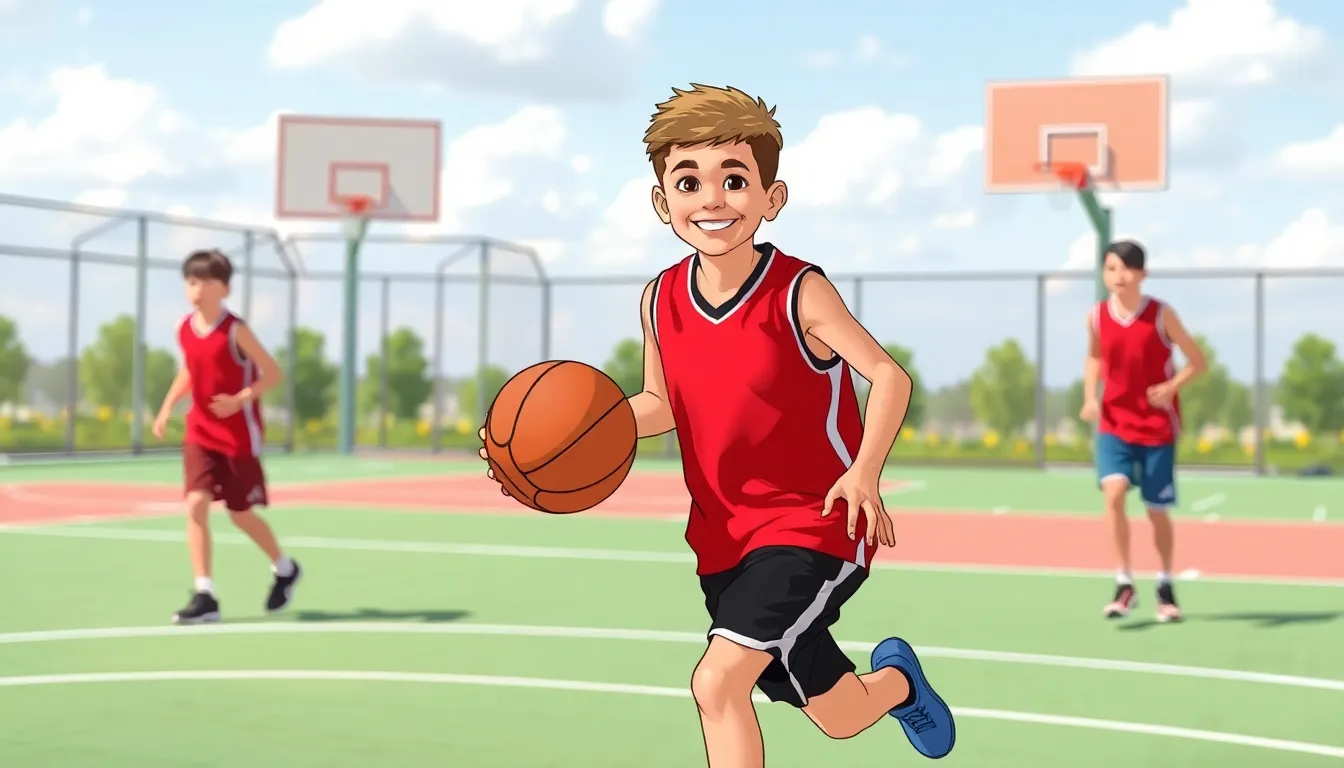In a world where kids trade video game controllers for soccer balls and basketballs, youth competitive sports have become the ultimate battleground for both talent and tenacity. It’s not just about scoring goals or hitting home runs; it’s about life lessons learned on the field, court, or rink. Who knew that a little friendly competition could teach kids about teamwork, discipline, and how to handle defeat—without throwing a tantrum?
Table of Contents
ToggleOverview of Youth Competitive Sports
Participation in youth competitive sports provides significant benefits. These activities promote physical fitness, encouraging children to stay active and healthy. Through teamwork, young athletes develop communication skills critical for both sports and social interactions.
Competition fosters motivation and goal-setting. Athletes learn to set personal goals, striving for improvement in their skills and performance. This environment cultivates resilience, as facing defeat becomes a learning opportunity rather than a setback.
Additionally, coaches play a vital role in shaping athletes beyond the sport. They mentor young participants, instilling values such as respect and dedication. Coaches often help participants understand the importance of sportsmanship, teaching them how to handle wins and losses gracefully.
Youth competitive sports also enhance community involvement. Local teams often rally support from families and residents, fostering a sense of belonging. Events showcase the spirit of cooperation, uniting individuals from diverse backgrounds.
Moreover, research shows that children engaged in sports are more likely to excel academically. The discipline learned through training tends to translate into better focus in school. Studies indicate that physical activity positively impacts cognitive function, contributing to improved academic performance.
Overall, youth competitive sports create an enriching atmosphere. They not only develop physical abilities but also build essential life skills. This holistic approach to growth is vital for personal development within and outside of sports.
Benefits of Youth Competitive Sports

Youth competitive sports offer various advantages that extend beyond physical prowess. They contribute significantly to personal growth and community engagement.
Physical Health Benefits
Youth competitive sports enhance physical fitness by promoting regular exercise. Participants often experience improved cardiovascular health, increased muscle strength, and better coordination. Research indicates that children involved in sports generally maintain a healthier weight, reducing the risk of obesity-related issues. Engaging in structured activities also helps establish lifelong habits of fitness. Surveys show that active youth are more likely to continue exercising into adulthood, fostering a sustained commitment to health.
Social and Emotional Development
Participation in competitive sports cultivates crucial social skills. Young athletes learn to communicate effectively with teammates and coaches, fostering collaboration and friendship. Emotional resilience emerges as they handle victories and setbacks. Those involved in sports frequently display higher self-esteem and better stress management capabilities. Additionally, strong support systems develop within teams, enabling athletes to share experiences and overcome challenges together. Studies highlight that children engaged in sports often report enhanced emotional well-being and a sense of belonging within their communities.
Challenges in Youth Competitive Sports
Challenges in youth competitive sports can significantly impact young athletes. These obstacles include pressure to perform, injuries, and safety concerns.
Pressure to Perform
Pressure to perform often weighs heavily on young athletes. Coaches and parents may inadvertently create high expectations, leading to stress. This stress can result in anxiety that detracts from enjoyment in sports. As young athletes strive to meet these demands, some may prioritize winning over personal growth. Over time, the pressure can lead to burnout, diminishing motivation and enthusiasm for participation. A study from the American Psychological Association highlights that 70% of youths quit competitive sports due to heightened pressure. Maintaining a balanced perspective focusing on skill development rather than solely on results promotes a healthier approach to competition.
Injuries and Safety Concerns
Injuries and safety concerns pose significant challenges in youth competitive sports. Various sports have different injury risks; for example, football often sees concussions, while gymnastics can lead to ankle sprains. According to the National Safety Council, over 1.3 million children sustain sports-related injuries annually. Ensuring proper training, safety equipment, and risk management strategies can minimize these injuries. Coaches and organizations must prioritize athlete well-being through educating players and parents about injury prevention. This proactive approach fosters a safer and more supportive environment, allowing young athletes to thrive without fear of significant injury.
The Role of Coaches and Parents
Coaches and parents significantly influence the landscape of youth competitive sports. Their involvement shapes young athletes’ experiences and development.
Coaching Techniques for Development
Effective coaching techniques foster young athletes’ growth and skill enhancement. Coaches emphasize skill refinement through practice drills and game simulations. Encouragement during training promotes self-confidence and a positive mindset in athletes. Constructive feedback helps them identify strengths and areas for improvement. Creating a supportive environment boosts athletes’ enjoyment of sports while learning critical life skills. An emphasis on teamwork fosters collaboration and respect, essential attributes for success in both sports and life.
Parental Support and Involvement
Parental support plays a crucial role in a child’s sports journey. Parents encourage participation, promoting a sense of belonging to teams and communities. Active involvement at games and practices shows their commitment to athletes’ endeavors. Communication between parents and coaches strengthens understanding and helps manage expectations. Prioritizing a healthy balance between competition and enjoyment can reduce stress for young athletes. Celebrating achievements and providing emotional support nurtures resilience, helping children navigate challenges both on and off the field.
Trends in Youth Competitive Sports
Youth competitive sports are increasingly adopting technology, enhancing training and performance analysis. Wearable devices track physical activity and monitor health metrics in real-time. Coaches utilize this data to tailor training programs that meet individual athletes’ needs.
Another trend in youth sports is the rise of inclusivity, with organizations creating opportunities for children of all abilities to participate. Adaptive sports programs recognize diverse capabilities, ensuring that everyone experiences the benefits of competition. This movement fosters a culture of acceptance and teamwork.
In addition, early specialization in a single sport has gained popularity among young athletes. Increased focus on developing specific skills may improve competitiveness, but a study by the American Academy of Pediatrics suggests that this approach could lead to burnout and overuse injuries. Diversifying participation can promote balanced skill development and lifelong enjoyment of sports.
Moreover, mental health awareness in youth athletics has gained traction. Many organizations now emphasize the importance of psychological well-being, recommending practices that support emotional resilience. Coaches and parents are encouraged to engage in open dialogues about stress management and healthy coping strategies.
Legal regulations also reflect changing trends. New safety standards and guidelines aim to minimize injuries, particularly related to concussions and overtraining. Compliance with these regulations protects young athletes and promotes safer sports environments.
Lastly, social media plays a significant role in youth sports culture. Young athletes use platforms to share achievements and connect with peers, fostering community engagement. This instant connectivity enhances motivation through the celebration of successes across networks.
Youth competitive sports play a vital role in shaping well-rounded individuals. They provide a unique environment where children can develop essential life skills while enjoying physical activity. The lessons learned on the field often translate into improved academic performance and stronger social connections.
While challenges like performance pressure and safety concerns exist, the benefits far outweigh the drawbacks when approached with balance and care. With supportive coaches and engaged parents, young athletes can thrive both in sports and in life.
Emphasizing inclusivity and mental health will further enhance the positive impact of youth sports. As the landscape of competitive athletics continues to evolve, the focus on holistic development will ensure that future generations reap the rewards of participation in youth sports.



